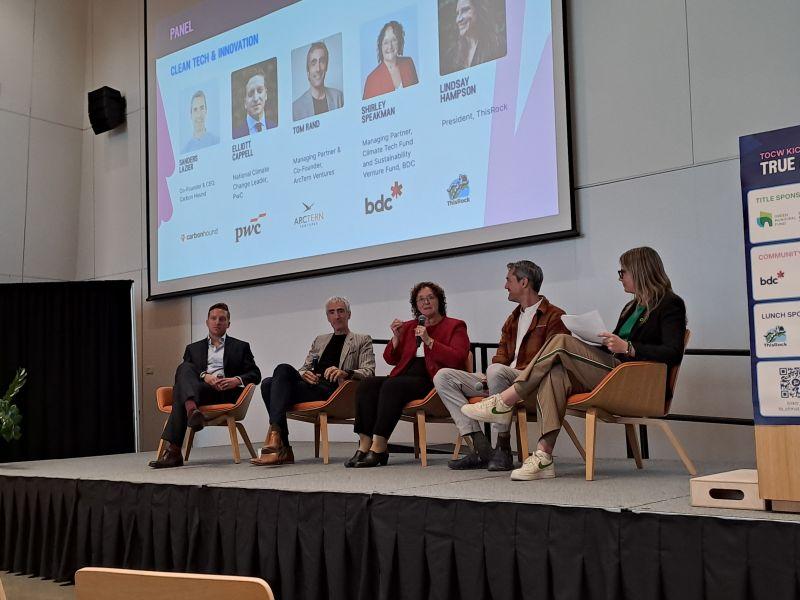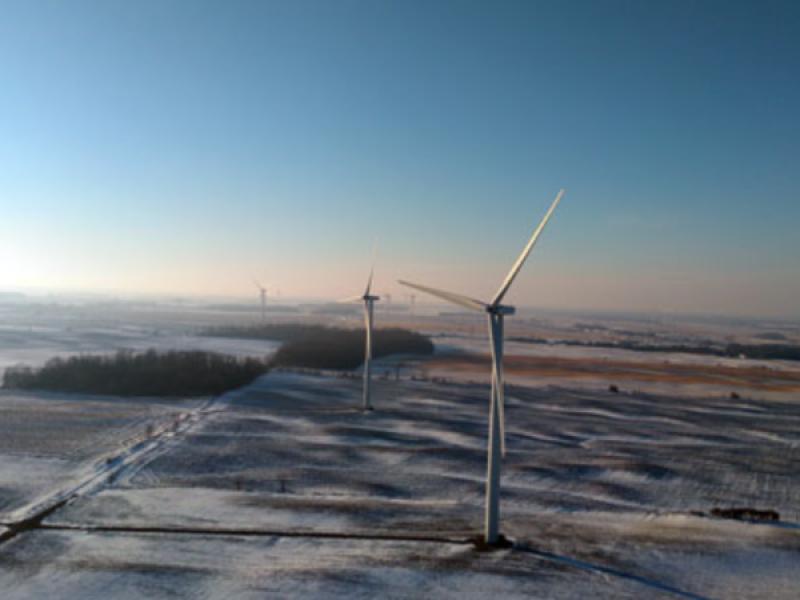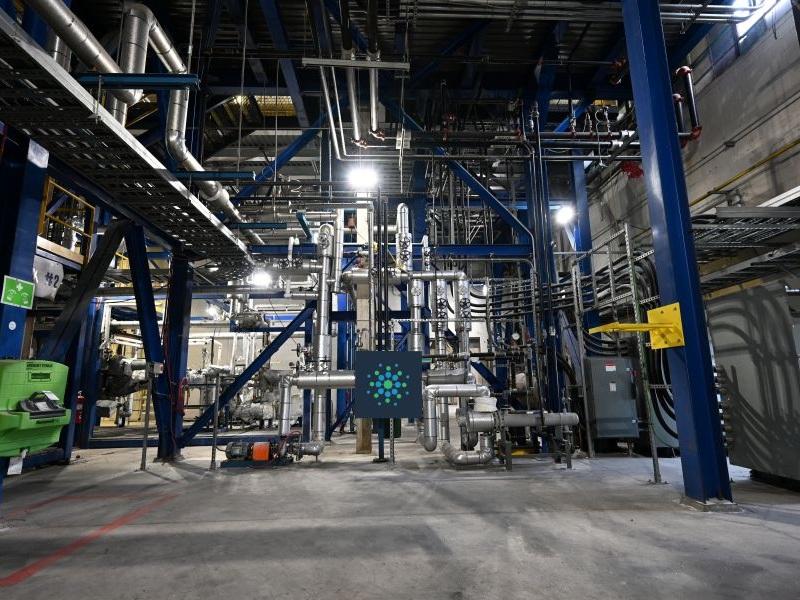
A technology that weaves sustainable fuel out of renewable energy, seawater and the air while capturing carbon dioxide (CO2) is the dual-purpose creation of Sydney, N.S.-based Aeon Blue.
Co-founded by siblings Lark Meadow and Deóis Ua Cearnaigh, the company's system is designed to generate a one-to-one replacement for traditional fuels, while removing and preventing 10 tonnes of CO2 per tonne of its fuel.
“We store a surplus of CO2, or we overcapture CO2 as another way to say it, and so we have a net-negative process,” CEO Meadow said in an interview with Sustainable Biz Canada.
The first step is to establish a pilot facility in Sydney that will produce 30 tonnes of fuel per year, then develop a commercial pilot site designed to produce 3,000 tonnes of fuel per year. By 2050, Meadow aims to have 10 Aeon Blue facilities worldwide that can generate a total of 500 million tonnes of fuels per year.
An early sign of its potential is being named one of 10 semi-finalists in the 2025 EarthX Climate Tech Prize and a finalist for the Ocean Breakthrough Award organized by Canada’s Ocean Supercluster.
Carbon-negative fuels from seawater and air
The company’s technology begins with a saltwater electrolyzer, which uses renewable electricity to split hydrogen from seawater or even brine from landlocked deposits. Sodium hydroxide (better known as lye or caustic soda) is produced from the process, and is unique because it serves as a CO2 capture solution.
Sodium hydroxide will be pumped into a tower where it will be sprayed inside, descending to the bottom and capturing CO2 from the air along the way. It is a quick, low-energy direct air capture solution that is cost-effective, Meadow described.
Pure gaseous CO2 is produced, which can be stored underground for long-term sequestration. A portion would be set aside to be mixed with hydrogen to produce fuels such as synthetic methane.
“It’s a total drop-in replacement,” Meadow said. It can be blended with fossil fuels to reduce the carbon intensity or serve as a substitute with no equipment modifications needed. She hopes Aeon Blue’s fuels can achieve cost-parity with fossil fuels by 2031, a tipping point to cross for mass adoption.
Additional products for sale can be made by its process, such as technical-grade distilled water.
The projected climate impact of Aeon Blue is for one tonne of the company’s synthetic fuel to remove three tonnes of CO2 from the atmosphere and prevent seven tonnes of CO2 by displacing fossil fuels.
Atlantic Canada helps U.S. siblings avoid startup ‘Valley of Death’
Now based in Canada, Aeon Blue was founded in the U.S. in 2018. Meadow and Ua Cearnaigh are U.S. citizens – Meadow the founder and former CEO of a non-profit supporting female filmmakers; Ua Cearnaigh an electrochemist.
Ua Cearnaigh, chief technology officer of Aeon Blue, invented the seawater-to-fuels technology, and asked his sister to help form a company. After participating in several accelerator programs and live demonstrations of its prototype, Aeon Blue’s leaders searched for a permanent home.
Texas was a promising candidate, but the startup was approached by the Canadian government to set up shop in Cape Breton Island.
Atlantic Canada is an emerging hub for green hydrogen production and wind energy production, attributes which stood out to the siblings. The region is “one of the most optimal locations for our technology in the world,” Meadow said, because it is a coastal area rich in renewable energy potential.
Then there were the enticing benefits such as tax incentives and non-dilutive programs. As overcoming the “Valley of Death” is critical – the arduous period when a startup is climbing toward commercialization – Meadow said moving to Canada to access the financial support will help surpass this challenging phase.
“What we have found is that moving to Canada was the best decision we could have made,” she said.
Upcoming pilot, commercial pilot facilities in N.S.
Aeon Blue has built a prototype in Toronto that was successfully validated, demonstrating CO2 capture and producing hydrogen, Meadow said.
The company will be starting a seed round to build a pilot facility in Sydney that Meadow expects to have online in 2026. The data from the test site will inform its commercial pilot facility, which she expects will be located on Cape Breton Island.
Aeon Blue’s commercial pilot facility is expected to begin operations in 2028 as a joint venture with an industry partner. The company is planning to expand the capacity over time and tap into power from local wind farms to support the growth, Meadow said.
She also hopes to have more sites across Canada; Quebec, British Columbia and Alberta are other ideal locations for Aeon Blue.










